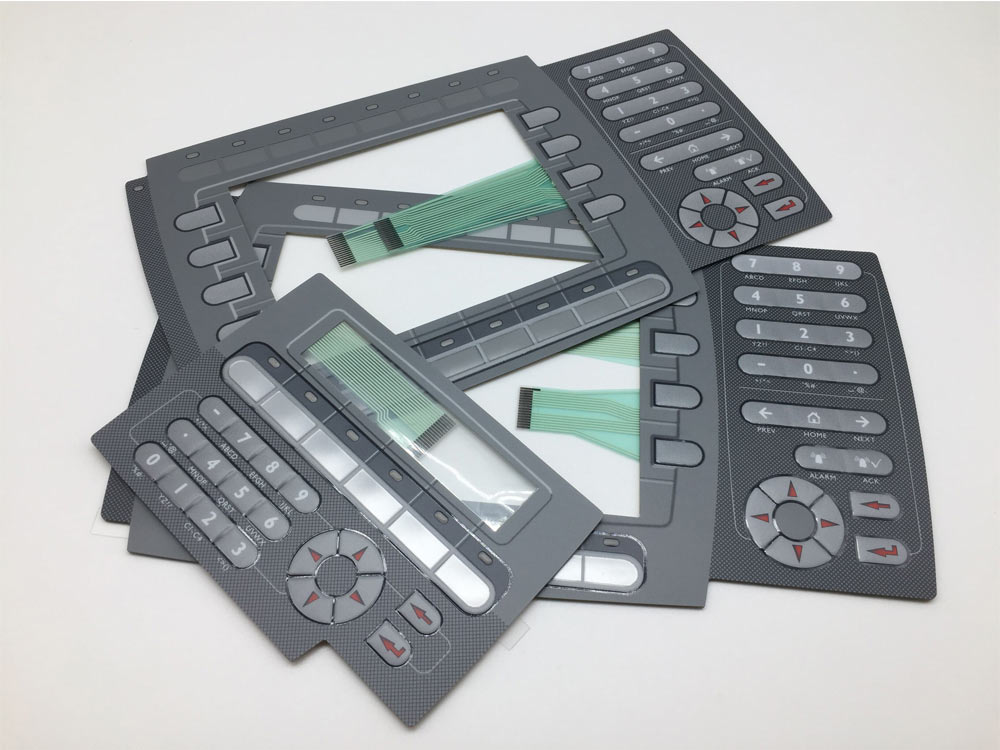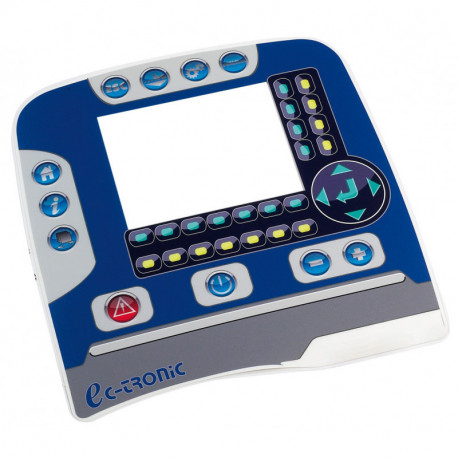Contact
Write to Us And We Would Be Happy to Advise You.
Do you have any questions, or would you like to speak directly with a representative?
By hqt
It is very common question that what is a membrane panel switch? The panel switches appear to us all very similar to each other, yet there are many differences between each model. One of the main ones is the basic technology that manages the operation of the keys. In this context, these divide into two macro categories:

In this article we will deal with what is a membrane panel switch in detail, analyzing their operation, characteristics and above all the pros and cons of this product. Take two minutes and let’s move on.
Membrane panel switches made their appearance with the new millennium. They arise from the need to have a simpler and more practical product to produce. This also meant a significant reduction in production costs and therefore in the final price to the customer.
Furthermore, if in the mechanical panel switch you can imagine every single key as a separate switch, in membrane panel switches these are managed by a single layer, called membrane. Further, you need to know that what is a membrane panel switch? In reality, the composition of the panel switch sees several layers:
This system of layers makes its assembly much faster, bringing with it several pros, but also many cons.
So let’s see together what the pros of a membrane panel switch are:
As mentioned, a membrane panel switch will always cost less than a mechanical sister, this due to a different production process that allows for a reduction in costs.
The design and the technical system used allow a reduced noise of the individual keys once pressed. This is extremely convenient in shared environments where typing noise needs to be reduced as much as possible.
If you are aware of what is a membrane panel switch then look at this pros. This particular technology requires a reduced use of materials and those used are almost always plastic, so the final device is light and easy to carry.
The keys of a membrane panel switch usually do not have empty spaces between them, or at least very small, which makes them easy to clean and maintain.
The cons are also not insignificant, as you can imagine:
Membrane technology, although more practical and economical, affects over time by continuous use and if a key has a problem, then it affects the entire panel switch. In practice they break much earlier than a mechanical panel switch.
It’s very quiet sound and both a pro and a con, this greatly reduces the pleasure of typing by not receiving any particular response from the panel switch. It will be easy to understand when you know about what is a membrane panel switch.
In a membrane panel switch you will always be forced to press the key all the way down, while in a mechanical panel switch this is not necessary. This greatly increases your time wasted typing text.
This definition indicates the phenomenon whereby, if we type many keys at the same time or almost at the same time, the panel switch ends up not recognizing them, forcing us to work more slowly.
There are many technologies that have been designed, tested, and even put into production. But after many experiences and rejections from users, what remains are the following popular technologies:
To learn about what is a membrane panel switch read the following carefully. This is the most popular type of universal panel switch today or simply known as a regular panel switch. This technology uses three layers. The top layer consists of character labels on flat key surfaces, referred to as the panel switch for short.
Furthermore, the middle layer acts as a spacer, separating the top layer and the circuitry layer below. The bottom layer is a series of stripes printed perpendicular to the previous layer.
When the former pushes down hard enough, it pushes through the pad, making contact with the latter. The last layer closes and activates the circuit.
There are two types of membrane panel switches:
The main difference between the two is their practical applications. Flat panel membrane technology uses for appliances with limited rear space, such as stoves, microwave ovens, copiers, and coffee makers.
After knowing that what a membrane panel switch is, now learn another well-known application of membrane technology is the dome switch panel switch. This is a hybrid switch between membrane and mechanical panel switch.

It works essentially the same, but it uses dome switches, called poly domes, to provide haptic feedback, which is often hard to find in true membrane panel switches.
Another use of dome switch technology is the scissor switch version. The operation of this type of panel switch is to use a done switch with high resistance, and add a scissor switch. The technology uses for the panel switch of MacBook Pro and MacBook Air laptops.
Mechanical panel switch technology was revived when generations of users realized that membrane panel switches make hands tired and typing is no longer enjoyable. People find it with the feeling of surfing on a traditional typewriter. And mechanical panel switches do this.
Mechanical panel switch
As you earlier know that what is a membrane panel switch now its turn of mechanical switches. Mechanical panel switches have complete mechanical switches under each key. Each switch includes Base, spring and Stem. After pressing the key, the spring activates and creates a knocking force, signaling to the membrane panel.
Depending on the internal structure of the switch, the material of each component, and the size of the spring, people are classified into many types of corresponding mechanical panel switches. Most of them differ in key height, tactile feel when typing, response and sound when pressed.
This state-of-the-art panel switch technology works by: projecting a laser in the shape of a standard panel switch onto whatever surface you want to type on. These panel switches measure light resistance and send a signal to the device when a button is pressed.
This is considered the technology of the future, with many promises and many interesting applications if it can be realized and mass-produced. Its major disadvantages so far have not been overcome: lack of tactile response, reduced excitement when typing, and high error rate due to high random key presses.
I have explained about what is a membrane panel switch before mechanical switch now time to Hall Effect switch. This type of panel switch uses magnets and sensors instead of mechanical or membrane switches. When a key is pressed, the magnet moves. The solid sensor underneath will detect this movement and send a corresponding signal to your membrane panel.
Modern mechanical panel switch
Without a doubt, there is only one best option for customers, and that is the mechanical panel switch. The tactile feedback, key responsiveness, and exhilarating sound that characterize mechanical panel switches make gaming engaging and emotional. Heavy-duty customers tend to choose heavy-duty mechanical panel switches, high profile keycaps, and moderate sounds.
For most normal general use, a membrane panel switch should be fine for you if you are really aware about what is a membrane panel switch. It is light, diverse designs, moderate durability, user-friendly, low cost. How many advantages are enough for you to bring one home to use for your daily work?
People who often teleport
Listen, perhaps laser panel switch technology is most suitable for people who are constantly on the move. But it’s still not stable and there are many typing errors, so maybe you need to think of a more secure solution.
Roll-up-membrane panel switch with waterproof features, curl easily fit neatly into the corner pocket, higher stable laser panel switch, would be a better choice for you. But you should also note that the roll up membrane panel switch will not give you any tactile feedback and will eventually create a feeling of boredom when typing.
In addition, if it is not too heavy to add a few hundred grams of weight when traveling, you can completely choose a regular panel switch or a modern mechanical panel switch. Remember to choose the big-name brands and be as light-weight as possible for easy portability.
Do you have any questions, or would you like to speak directly with a representative?